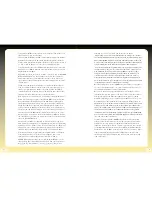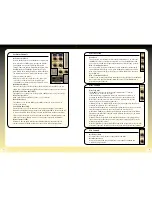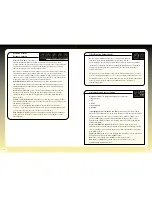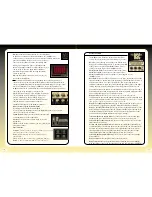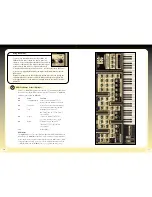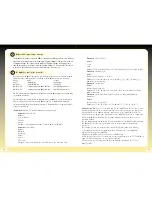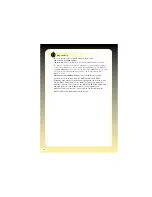
12
13
Env 1 – Amplitude ADSR controls
Attack Knob:
Used to alter the attack time of
the amplitude envelope generator between 0.001 and 15 Secs
Decay Knob:
Used to alter the decay time of the amplitude envelope generator
between 0.001 and 30 Secs
Sustain Knob:
Used to alter the sustain level of the amplitude envelope generator
between -
∞
(minus infinity) and 0 dB
Release Knob:
Used to alter the release time of the amplitude envelope generator
between 0.001 and 60 seconds.
Q Knob Or resonance:
This boosts the harmonics around the cut-off frequency.
Separation Knob:
Unique to the OSCar and impOSCar. This takes the two 12dB
filters and allows independent control of their cutoff frequencies. When used with
either the 4 or 2 pole filter modes it’s possible to separate the filters by up to 24
semitones.
NB: In the first six filter modes zero separation takes place when the knob is turned
fully to the left. In the last three multi-modes zero separation takes place when the
knob is at 12 O'clock.
Amount Knob:
Determines the filter amount applied to the filter envelope
(ENV2). This also works in positive and negative modes.
Env2 – Filter ADSR controls
Attack Knob:
Used to alter the attack time of
the filter envelope generator between 0.001
and 30 Secs.
Decay Knob:
Used to alter the decay time of
the filter envelope generator between 0.001
and 30 Secs.
Sustain Knob:
Used to alter the sustain level of the filter envelope generator
between 0% and 100%.
Release Knob:
Used to alter the release time of the filter envelope generator
between 0.001 and 60 seconds.
Delay Knob:
This applies a delay of up to 2 seconds to the start of the filter
envelope generator and is useful for creating those long, evolving sounds.
Triggering Controls
Keyboard Triggering Knob:
The impOSCar
has five triggering modes as follows:
1. Single:
Using this mode the envelopes are only
retriggered once their cycle is complete. When playing legato lines, the first note
triggers the envelope contour and all successive notes are heard at sustain level.
2. Multi:
Here, the envelopes are retriggered each time a note is played without
waiting for the envelope cycle to finish first. Unlike Single trigger, when playing
legato lines, all notes will retrigger the envelope contour.
3. Rpt 1:
Used in conjunction with the Tempo Knob, Rpt1 activates the
retriggering of the Amplitude Envelope (Env1).
4. Rpt 2:
Similar to the Rpt1 function, Rpt2 activates the retriggering of the Filter
Envelope (Env2) in accordance with the selected tempo.
5. Rpt 1+2:
This activates the retriggering of both the Amplitude and Filter
Envelope in accordance with the Tempo Knob.
Tempo Knob:
Controls the tempo of either the Arpeggiator or the retriggering of
the envelopes as described previously. The tempo of the impOSCar can be clocked
internally or synchronised to an external source (see arpeggio sync page 16). If set
to Internal Clock the Tempo Rate is shown as BPM. If set to External Clock the
Tempo Rate is shown as Beats Per Bar.
Gate Time Knob:
When using any of the aforementioned Rpt triggering options
this knob can be used to alter the Gate Time of either one or both envelopes. The
default Gate Time setting is 50% and moving the knob to the right extends the
Gate Time whereas moving the knob to the left shortens the Gate Time.
For optimum Gate Time control ensure the Release Times of each envelope are not
too long.
Function Knob:
A radical departure from the original instrument, here the
Function Knob selects from six polyphony modes:
1. Mono:
Selects monophonic mode, ideal for lead or bass lines.
2. Duo:
A maximum of two notes can be played simultaneously with either note
having the ability to play one or both oscillators depending on whether one or
two notes are played (see Using Duo Mode page 20)
3. Poly4:
A four voice polyphonic mode.
4. Poly8:
An eight voice polyphonic mode.
5. Poly12:
A twelve voice polyphonic mode.
6. Poly16:
A sixteen voice polyphonic mode.
A word about CPU load and polyphony
When using a maximum of, say, eight voices (notes) use Poly8 mode as this can
drastically reduce CPU overhead (if using 4 voices select Poly4, if 12 Poly12).
There are two reasons for using less than maximum permitted 16 voices:
1. It puts a cap on the processor use and 2. It limits the amount of voices playing
when using sounds with long envelope release times.



